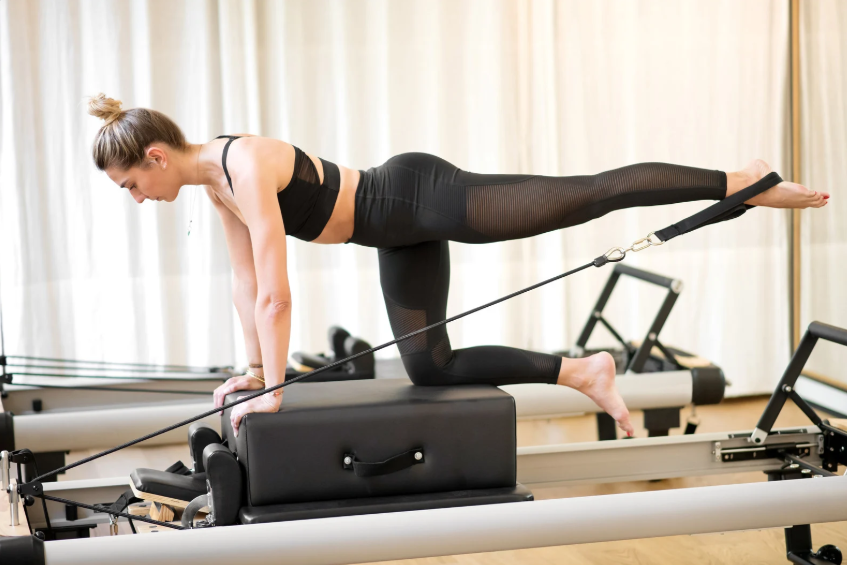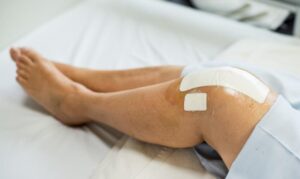Athletes are always searching for new ways to enhance their performance and prevent injury. Pilates has emerged as a powerful training tool for athletes in various disciplines, offering a unique blend of core strength, flexibility, and balance. By incorporating Pilates into their fitness routine, athletes can not only boost their athletic performance but also reduce the risk of injury, making it an essential part of any comprehensive training program.
What is Pilates and How Does it Benefit Athletes?
Pilates is a low-impact exercise method that focuses on strengthening muscles while improving postural alignment, flexibility, and mental focus. Unlike traditional forms of exercise, Pilates emphasizes controlled movements that target the body’s deep muscles, often referred to as the “core” muscles. For athletes, Pilates offers an effective way to develop core strength, improve flexibility, and boost overall body awareness. It is especially beneficial for athletes who engage in high-impact sports or those looking to maintain balance in their training routine. By engaging in Pilates, athletes can develop better body mechanics, resulting in more efficient and effective movement on the field, court, or track.
How Pilates Enhances Athletic Performance
Core strength is the foundation of athletic performance, and Pilates is renowned for its ability to target and strengthen the deep core muscles. A strong core provides stability and supports proper body alignment, allowing athletes to perform at their peak without unnecessary strain. Pilates exercises, such as the “plank” or “bridge,” activate the muscles of the abdomen, lower back, and pelvis, which are essential for overall power and endurance.
Moreover, Pilates helps increase flexibility, which is vital for optimal performance. A greater range of motion allows athletes to move more freely, whether it’s reaching for a ball, sprinting, or executing a flawless dive. Flexibility also contributes to muscle efficiency, reducing fatigue during extended physical activity. Through dynamic stretching and controlled movements, Pilates enhances flexibility and aids in maintaining joint mobility, reducing the risk of stiffness and muscle tightness.
Pilates also plays a critical role in improving balance and coordination. By training the body’s stabilizing muscles, athletes become more aware of their body’s movements, improving their ability to maintain control and execute precise movements during their sport. Enhanced balance translates into better performance in activities that require agility, such as gymnastics, tennis, and skiing.
Pilates for Injury Prevention: A Key Component in an Athlete’s Training
Injuries are an unfortunate but common occurrence in the world of sports, but Pilates offers a proactive solution. Many sports-related injuries stem from muscle imbalances, poor posture, and insufficient flexibility. Pilates addresses these issues by focusing on strengthening weak muscles and stretching tight ones, creating a more balanced body. The low-impact nature of Pilates also reduces the stress placed on the joints, making it a safe way for athletes to strengthen their muscles without risking overuse injuries.
One of the key ways Pilates prevents injuries is through the strengthening of stabilizing muscles. These muscles help support the spine, pelvis, and limbs during athletic activity, reducing the chances of sprains or strains. Pilates also promotes better posture, which is essential for preventing back and neck injuries. By teaching athletes how to maintain proper alignment during both everyday activities and training, Pilates minimizes the risk of overuse injuries and ensures that the body moves efficiently.
Pilates Exercises Every Athlete Should Incorporate
There are several Pilates exercises that athletes can incorporate into their routine to strengthen the muscles that are crucial for performance and injury prevention. Some of the most beneficial Pilates exercises for athletes include:
- The Plank – This exercise targets the entire core, helping to build stability and strength in the abdominal muscles, back, and shoulders.
- The Bridge – Great for strengthening the glutes, hamstrings, and lower back, the bridge exercise is essential for improving power in the lower body.
- Leg Circles – This move helps increase flexibility in the hips and strengthens the muscles around the pelvis, improving mobility and stability.
- The Saw – A rotation exercise that enhances spinal mobility and strengthens the obliques, helping to improve athletic performance in sports that require rotational movements, like tennis or baseball.
- Swimming – An excellent exercise for building overall core strength and increasing flexibility in the back and shoulders.
Each of these Pilates exercises targets specific muscle groups, helping athletes build the strength, flexibility, and balance they need to excel in their sport.
Pilates and Recovery: The Role of Active Rest
Pilates is also a great way for athletes to incorporate active rest into their training program. After intense workouts or competitions, the body needs time to recover, but complete rest isn’t always the best option. Pilates provides a gentle, yet effective way to recover by improving circulation, releasing muscle tension, and increasing flexibility without putting excessive strain on the body.
Many athletes turn to Pilates during their off-season or recovery phase to maintain their fitness levels and prepare their bodies for the next round of intense training. The low-impact nature of Pilates exercises ensures that athletes can continue to work on their strength and flexibility without overtaxing their muscles or joints. By focusing on recovery, Pilates helps athletes return to their sport feeling rejuvenated and ready to perform at their best.
Real-Life Success Stories: Athletes Who Have Benefited from Pilates
Numerous professional athletes have integrated Pilates into their training routines and experienced remarkable results. For example, elite tennis players have used Pilates to enhance their agility, increase their core strength, and improve their balance on the court. Olympic gymnasts have incorporated Pilates to build flexibility and reduce the risk of injury during rigorous training sessions. Even football players have turned to Pilates for injury prevention and to strengthen their bodies in preparation for the demands of the season.
These success stories are a testament to the power of Pilates in supporting an athlete’s training and performance. Whether it’s improving strength, flexibility, or recovery, Pilates has proven to be an essential tool for athletes across various sports.
How to Get Started with Pilates as an Athlete
If you’re an athlete looking to incorporate Pilates into your training routine, the first step is to find a qualified instructor or class. Many Pilates studios offer classes specifically tailored to athletes, which focus on exercises that enhance performance and prevent injury. For beginners, it’s important to start with foundational exercises and gradually build up to more advanced movements.
If you’re looking for a more personalized approach, you can work with a Pilates instructor to create a training plan that aligns with your athletic goals. Pilates can easily be incorporated into your existing training program, whether you do it once a week as a recovery session or more frequently to build strength and flexibility.
Takeaway
Pilates offers athletes a unique and effective way to enhance their performance and prevent injury. By strengthening the core, improving flexibility, and enhancing balance, Pilates supports athletic training in a way that few other exercise methods can. Whether you’re an elite athlete or a weekend warrior, incorporating Pilates into your routine can take your performance to the next level while helping you stay injury-free. Start exploring Pilates today and experience the benefits for yourself!






